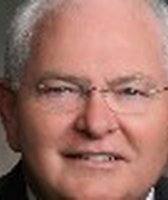Stand up for the facts!
Our only agenda is to publish the truth so you can be an informed participant in democracy.
We need your help.
I would like to contribute
Democratic senator says state already cutting jobs, cites study
On the campaign trail, Gov.-elect Rick Scott promised to cut the state workforce by 5 percent. But now some Democrats are using a new state study to say the cuts aren't needed.
The Department of Management Services released its annual state workforce report on Dec. 8, 2010. The report profiles the number of state employees and their salaries, and it offers comparisons to state government workers nationwide.
That comparison is quite favorable, said state Sen. Bill Montford, D-Tallahassee.
"We're getting a good deal from our state workers," Montford said after digesting the results of the report.
"Facing the financial crisis that we are, I understand why anyone would say we have to cut back across the board, but we have less employees this year than we did last year," Montford told the Tallahassee Democrat. "We're already reducing the size of government."
As part of Scott's "7-7-7" plan to create about 700,000 private sector jobs in seven years, Scott has said he wants to trim 5 percent of the state workforce. Scott says that the workforce reduction would save almost $300 million, and that history shows Florida's economy grows better when government spending is lowered.
But Montford, like Democratic gubernatorial nominee Alex Sink, argues that the state government already is pretty lean. As proof, he says the state workforce is shrinking.
That's the statement we're checking here.
Highlights from the report
Florida in 2009 had the lowest ratio among the 50 states of full- and part-time state employees to overall population, and the second lowest ratio of full-time equivalent employees to population (Illinois ranked ahead of Florida), according to DMS.
Florida also had the lowest payroll expenditures per resident -- $38 -- in the country, the DMS found, using public payroll expenditures submitted to the United States Census Bureau. The national average was $72 per resident.
A word of caution about both figures -- Florida, because of its large population, has a comparative advantage using these types of calculation when compared to states with smaller populations. Those states still have to provide most or all of the public services that Florida does, but just for fewer people. Delaware and North Dakota, for instance, both have nearly three times as many state employees per resident when compared with Florida, and spend three times more on payroll per resident.
A couple of other interesting figures -- women occupy more than 56 percent of traditional state government jobs, but less than 40 percent of senior management positions, and women across the board make less on average than their male colleagues. Male employees in the state personnel system earn $45,715 on average while women earn $40,496.
State employee count
Montford, in his comments, focuses on the state employee count. There are a couple of different ways the state takes a head count.
Most figures refer to employees in the state personnel system -- those are the traditional government workers from state departments and agencies. But university employees -- professors and researchers and others -- are technically state workers, too. So are all the state courts and judicial system. On top of that, the state measures the government workforce by both budgeted positions, and the actual number of employees.
Luckily, regardless of how you classify the number of state employees, the results are generally the same.
But not necessarily a ringing endorsement of Montford's point.
The total budgeted state workforce as of June 30, 2010, stood at 167,797 -- 857 employees less than in 2009, and 5,689 employees less than in 2008. But the state in 2010 had 529 more employees than it did on Dec. 31, 2006, according to DMS.
If you look only at the state personnel system employees -- those that work directly for the government in an agency or department -- the gaps shrink ever more. The state system budgeted for a total of 109,020 employees in 2010, 456 employees less than its 2009 total (a 0.4 percent decrease) and 154 more than at the end of 2006 (a 0.1 percent increase).
So in budgeted head counts, the state cut back ever so slightly from 2009 to 2010, but still has a bigger workforce than it did four years ago.
The actual employee figures track the same way. State personnel system employees dropped from 105,174 in 2009 to 105,031 this year (difference of 143 people, or a 0.1 percent decline). But the number of employees increased 0.6 percent overall from 2006 to 2010.
We tried to contact Montford's office to see which figure specifically he was citing, but we did not hear back.
Conclusion
In arguing that Scott's plan to shrink the state workforce 5 percent may be illogical, Montford noted that the state already is cutting its head count. He's technically right -- a Department of Management Services report released on Dec. 8 found that the state workforce shrunk from 2009 to 2010. But hardly in a measurable or significant way. Sometimes we find a statement is accurate but still needing clarification or additional information, and that's the case here.
The state workforce shrunk between 0.1 and 0.4 percent depending on how you calculate it in 2010. But the workforce is bigger than it was at the end of 2006. We think those two facts combined seriously shade Montford's statement. So we say Mostly True.
Featured Fact-check
Our Sources
Tallahassee Democrat, Florida's workforce least expensive in nation, report says, Dec. 8, 2010
Rick Scott, 7-7-7 plan, accessed Dec. 8, 2010
Department of Management Services, state workforce report, Dec. 8, 2010
PolitiFact, Alex Sink says Florida is last on two state employee measures, Sept. 14, 2010
Browse the Truth-O-Meter
More by Aaron Sharockman
Democratic senator says state already cutting jobs, cites study
Support independent fact-checking.
Become a member!
In a world of wild talk and fake news, help us stand up for the facts.


































